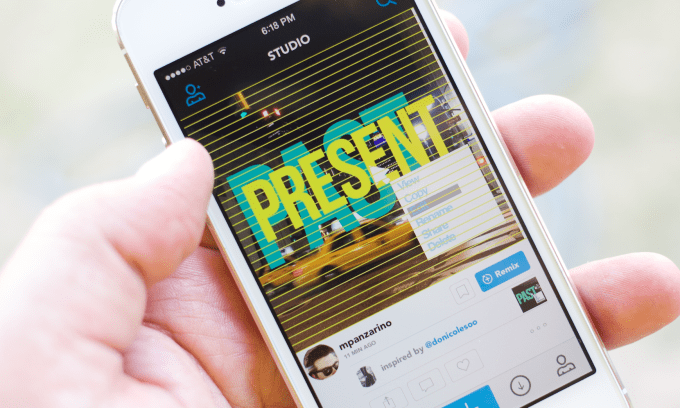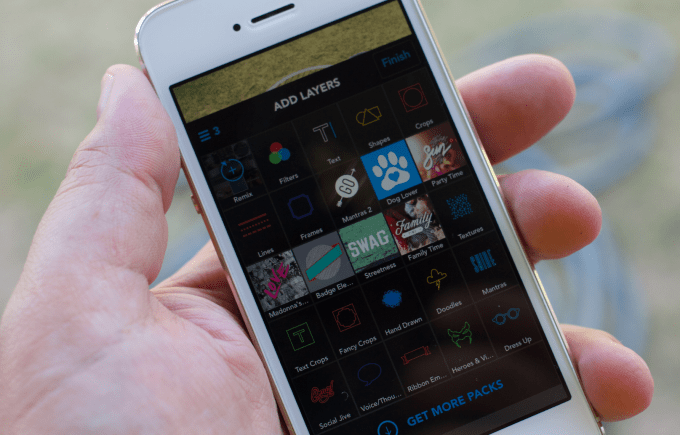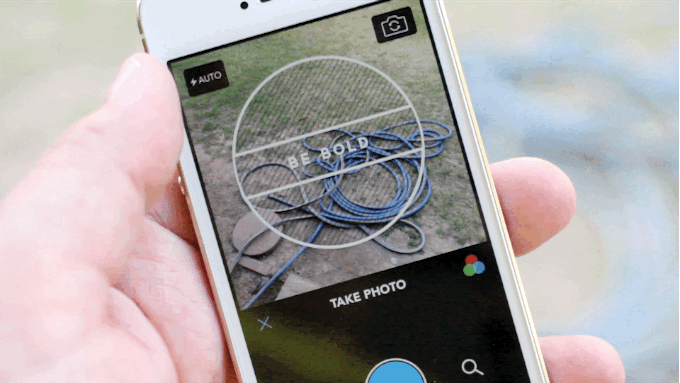When you’re speaking to someone who’s created a photo sharing app that has a social component, there’s a certain kind of mutual understanding. This isn’t the first time that this has been done — they’re mostly hoping that the permutation on the formula that they’ve come up with will be one that resonates.
During those conversations, there’s one thing you always wait to hear: the word “communicate.” Because if your photo sharing app has a social component of any sort, it’s not actually a photo sharing app — it’s a messaging app.
Whether the model is one-to-many or one-to-one, once you invite feedback you’re having a dialog. It’s something that a surprising number of photo sharing app creators don’t get right away — if ever. Just because you’re not using text or audio doesn’t mean that you’re not having a conversation.
Studio designer Joe Wilson says that the latest version of the app, out today, is all about art that elicits a response. The act of creating, of self-expression, is typically a single-player experience, says Wilson. But when it’s done online via networks like Tumblr, Instagram or in Studio, it’s done to evoke a reaction. That was the lightbulb moment that the team had after shipping their 1.0 product, which we covered a few months ago.

Studio 2.0 is an app that lets you shoot a photo, add filters and a variety of vector-based flourishes like text, frames, crops and designs — and post it to the app and other networks. The app has taken seed investment from CrunchFund*, SV Angels, Ashton Kutcher’s A-Grade, Peak Capital Partners, Michael Levinthal and the KickStart Seed Fund.
The key hook is that you’ve got an absolute ton of free elements to play with — and you can take designs that others have created and riff on them by remixing those designs with your own photo, elements and tweaks. The result is a sort of collaborative collage feed that can, at times, feel like a Photoshop battle thread on Reddit or another online forum, and I mean that in the best way.
The first release of the app focused on the visual editor, relegating the remix option to a sub menu. But it became clear that some people really had a knack for creating original designs in the app, where others had issues even getting started, failing out of the design process due to the “blank canvas” barrier.
Wilson describes a conversation he had with Kevin Heap, one of Studio’s developers. “You go home at night and make these fun things with Studio,” said Heap. “I fire it up and make stuff that looks like crap.”
That’s exactly the barrier that the remix option is designed to overcome.

The mechanics of the remix feature are clever. When you choose to remix another person’s design, the ‘base’ photo fades away, forcing you to use your own. This was done to prevent bullying and will likely encourage the continuation of the dialog aspects of Studio. Your remix launches with the design editor floating on top of a live camera feed, encouraging you to shoot away. The design elements are conversational tools, and the photo is the basis of the conversation.
I’ve been fascinated for some time with the way that messaging apps leave a whole layer of emotional subtext behind when they stick to text or even emoticons. Giving people a starting point of design language to play with creates a mood that they can then modify and tweak as they continue the conversation with people via remixes.
And people are responding. The remixes, even before today’s more prominent release, have been in the mid-teen percentage of posts, and the number is rising. The app has 2.5M installs and 10M designs posted and people have made 16.5M connections by following people in the app.
When discussing Studio, Wilson makes an interesting comparison to collaborative business software, like Yammer or Salesforce. That kind of back and forth collaboration, in an environment of share and share-alike is what they’re trying to replicate with Studio. You’re creating things with the knowledge that they’re just the start of what could become a conversation with your followers.
That was done by deciding that anything in Studio should “live,” says Wilson. Unlike other photo editors like Photoshop or a variety of other titling and creation apps, nothing in Studio is “dead on export.” It continues to be able to be manipulated and played with in service of a conversation.
This expands the vocabulary of sharing beyond photos to both the individual elements that you use to create your posts, as well as the resulting remixes. And the posts are threaded together by a credit that shows who the remixed design was inspired by and enables you to flow backwards through the conversation.
“[These users], they’re not designers, not photographers, not artists but they’re creating things,” says Wilson. “Our goal is to have the largest community in the world of people creating.”
And opportunities for monetization abound, from packs of design elements created by independent designers or brands looking to produce collections that spread their marketing agenda.
There have been some other attempts at this kind of collaborative remixing, such as ex-NYT designer Khoi Vinh’s Mixel, which was acquired by Etsy. But there’s something about the focused aspects of Studio that make it interesting — and might give it a chance of surviving when there are 10 other social photo apps waiting in the wings.
Regardless, there’s something here — especially in the way that it combats the brutal fear that a blank canvas can inspire in people that aren’t designers by nature — and even some that are. Let’s see how this one develops.
Studio 2.0 is available in the App Store now.
*CrunchFund, a Studio investor, was started by Michael Arrington, who co-founded this site.
